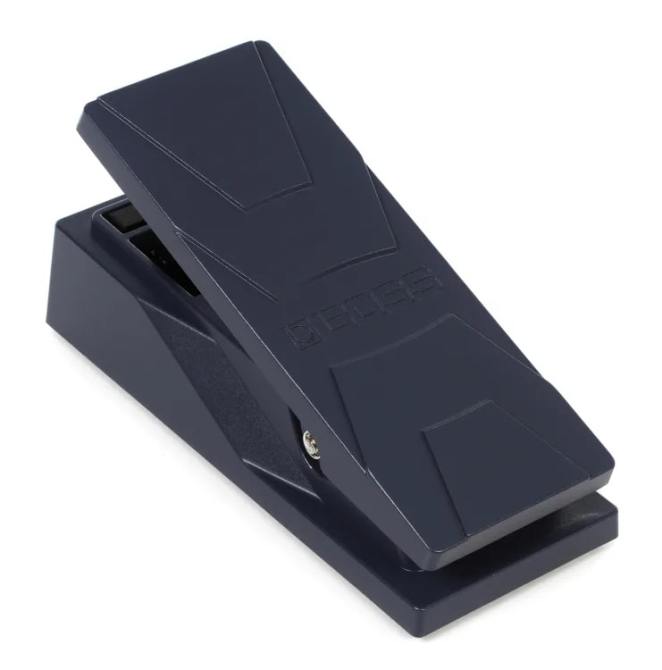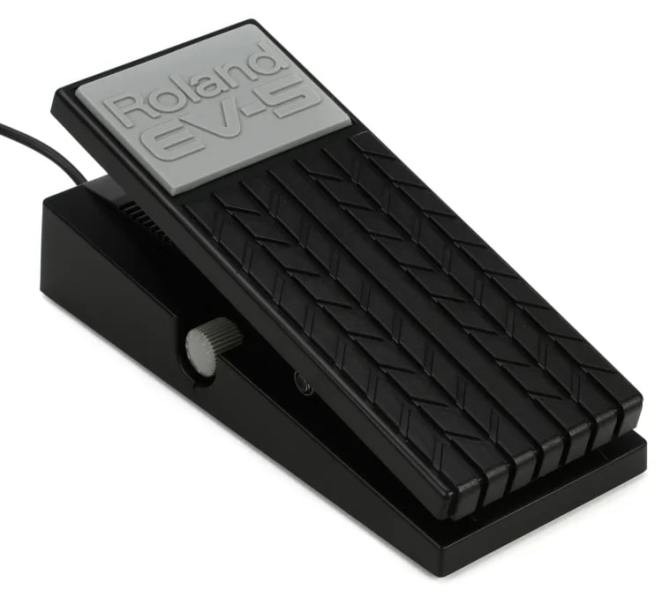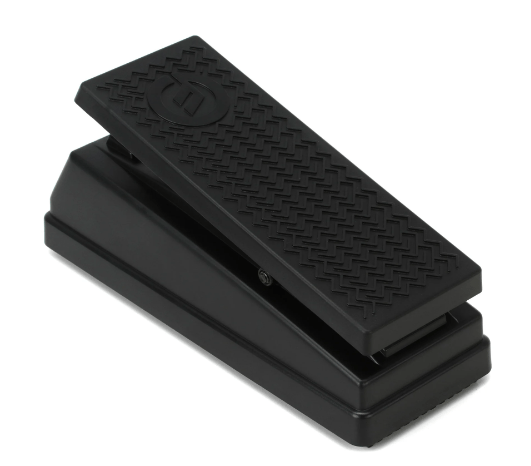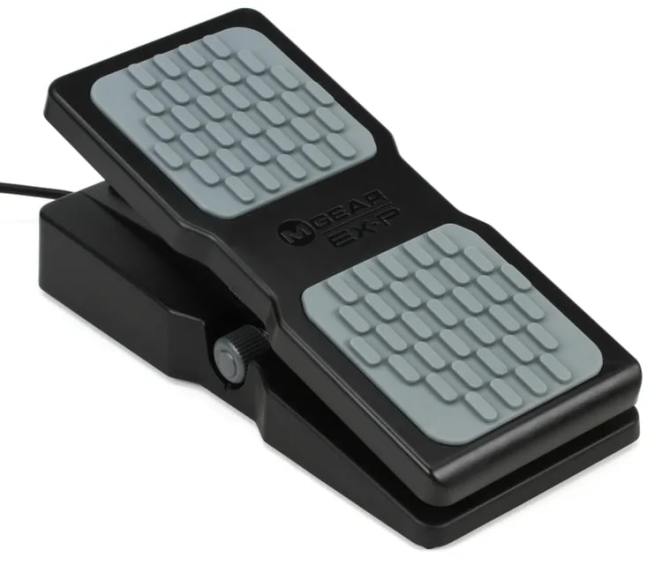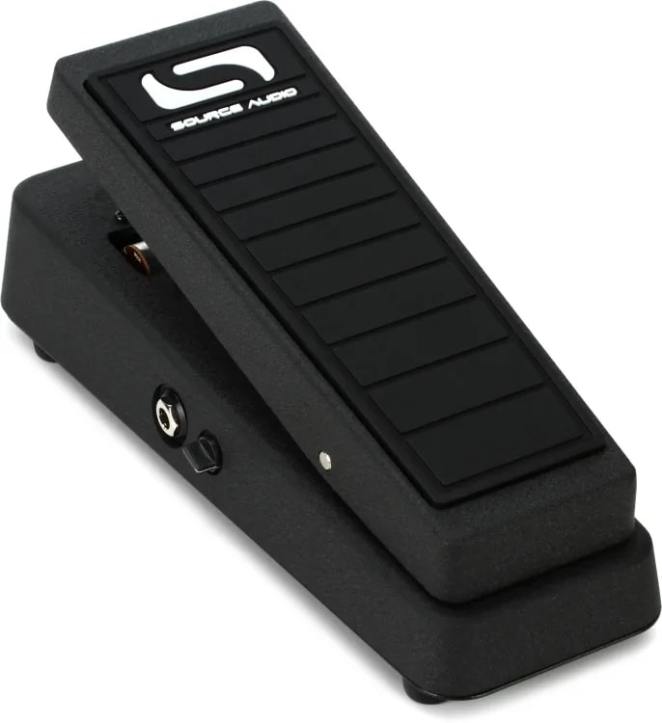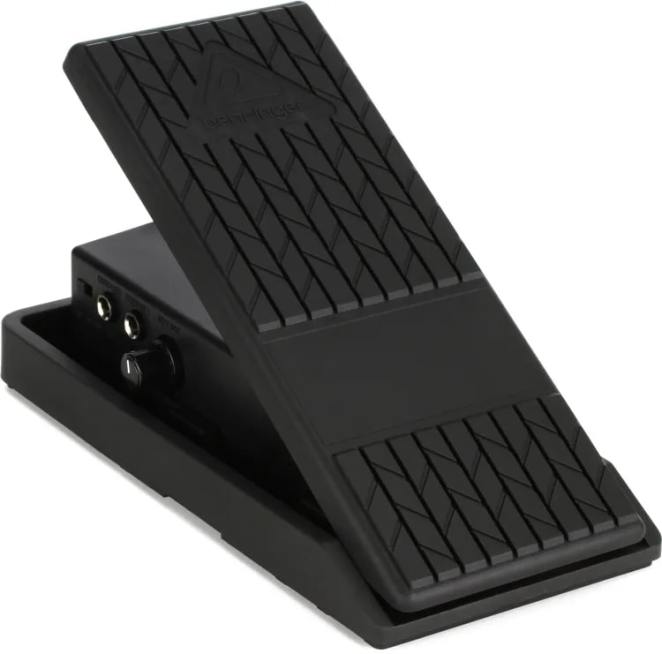When you buy through our links, we may earn an affiliate commission.
Expression pedals can completely change the potential of your guitar, keyboard, or other electronic instrument setup. Instead of just toggling an effect on or off, expression pedals allow you to control how much of an effect is applied while you're playing the instrument – just by using your feet.
Adding an expression pedal to your pedal board can completely change the dynamic range of your performance, allowing you to create more fluid and exciting demonstrations of skill and musicality. Without one, there is a chance your performances can fall flat.
That said, there are a lot of different expression pedals out there, and not all of them will be suitable for you and your gear setup. So you must choose the right one for your needs – which I'll help you work out in this article.
One of my favorites is the Boss EV-30 Dual, it's super well made, but it's also a dual expression pedal, meaning you can use it to control two effects simultaneously. Essentially giving you double the bang for your buck in terms of results.
Although, many of the other fantastic expression pedals covered in this article might be more suitable for your setup and budget.
Let's get stuck in!
Quick Summary of the Best Expression Pedals
- Boss EV-30 Dual Expression Pedal (Overall Best Pedal)
- Roland EV-5 Expression Pedal (Best With a Keyboard)
- Moog EP-3 Universal Polarity Expression Pedal (Best Value)
- M-Audio EX-P Expression Pedal (Most Budget-Friendly)
- Source Audio Dual Expression Pedal (Best for Precision)
- Behringer FCV100 V2 Dual-mode Expression Pedal (Best Hidden Gem)
Best Expression Pedals
Overall Best Pedal
SPECS
- 2 channels
- Aluminum
- TRS cable included
The most notable difference between Boss EV-30 dual expression pedal and the others in this review is that it's a dual-expression pedal, with dual outputs. This means you can connect it to two individual expression inputs, giving you control over two parameters at once – which opens up some really fun techniques.
Another reason I love this pedal is its durability. Made from aluminum, the Boss EV-30 can withstand much more use and transportation than your typical plastic pedal. Thanks to its relatively heavy weight, it's also less likely to slide around while you're using it, which I think is important. I've used lighter, thinner pedals, and I find their instability to be super frustrating, and even a deal breaker. I didn't experience any of this nuisance with the Boss EV-30.
I also really like the extra controls this pedal comes with, letting you fine-tune its performance. You can use the knobs on the pedal to set the start and end values of both parameters to whatever value you choose. There's also a polarity inverse switch, which allows you to reverse the start and end points on the effect value.
I think these additions give you all the controls and adjustments you need to get a huge amount of use out of the pedal. It's definitely not a one-trick pony, and I can think of endless ways to incorporate this into your effects board to bring some interesting new expressive dynamics.
Volume swells, wah pedal action, distortion ramps -–the Boss EV-30 makes them all possible, and that's just scratching the surface of this pedal's capabilities.
I will say that the cost of this pedal does price a lot of players out, but I think this really is 'the best expression pedal' in terms of quality and features. If you can afford it (and justify it) it's a lovely tool, but make sure you have the gear to match!
What Could be Improved
- The price is high (but fair)
- Overcomplex for newer musicians
- I personally think it's a bit ugly-looking
Best With a Keyboard
The Roland EV-5 Expression Pedal has a similar construction to Boss's EV-30, except it's more lightweight and designed primarily for use with keyboards rather than guitar pedals.
SPECS
- 1 channel
- Plastic
- TRS cable connected
I think this is a strong choice for players on a smaller budget, and if you're playing the keyboard rather than guitar.
Its plastic construction makes it less resilient than the Boss EV-30, but it also makes it ideal for people who want a more lightweight pedal. The Roland is super convenient to carry around in your backpack or gig bag.
While this pedal is designed to be used with Roland keyboards, it works just as well with guitar pedals. I will say that I found the angle of the footboard wasn't as suitable for standing/guitar playing as it was for sitting with a keyboard. It's not a dealbreaker, but I would definitely rather use this for my keyboard setup, and use a more standing-friendly pedal for my guitar setup.
As I mentioned in my Roland EV-5 expression pedal review, many players appreciate the grooves on it, which provide traction for your foot while you're controlling the pedal's FX level. This allows you to be very precise and articulate with your expression control.
There's a control knob on the side of the pedal, for setting the minimum level of the assigned parameter, although there aren't many other tuning controls, which I would like to have. But for the price, I think what you get is fair.
I will also highlight that the Roland EV-5's cable is connected to the pedal – which I personally find a bit of a pain, as it means you can't change cable lengths, and it's more annoying to fix if the cable breaks. But I know that some players will like this, as it means you won't lose the cable so easily.
What Could be Improved
- Fixed cable length, can be inconvenient
- Plastic casing is not as sturdy as metal
- Foot profile is not ideal for standing guitar players
Best Value
The Moog EP-3 is a perfect middle-of-the-road pedal for anyone who wants a decent piece of gear for good value.
SPECS
- 1 channel
- Plastic
- TRS cable included
The EP-3 has a similar set of features to the Roland EV-5, giving you a polarity switch and a range knob, although I think the build quality here is a bit lower and not so strong.
In my Moog EP-3 expression pedal review, I found this pedal to be smooth and fluid, providing solid expression control for my feet, without any bumps or jumps. I like how it includes a polarity switch and a range knob for fine-tuning the performance a bit.
It comes with a six-foot cable included, which adds to the convenience of the product, but you can also use any other compatible cable, which is a thumbs up from me!
This is a great mid-budget addition to your effects chain, and I would recommend this device to anybody looking for an affordable expression pedal to start experimenting with. Obviously, it doesn't have the high quality and deep customization of more expensive models, but it also has a very reasonable price.
What I Think Could Be Improved
- Designed to be used with Moog effects, not the most universal.
- Comes with a fixed cable.
- Can't be used as a CV controller.
Most Budget-Friendly
Super affordable with surprisingly decent quality, the M-Audio EX-P is a great option for a quick, cheap solution that works great – especially for the price.
SPECS
- 1 channel
- Plastic
- TRS cable connected
I've been there before... only a few dollars in my account but itching to get a new bit of gear – there's no shame in that! Well, if you're looking for the most budget-friendly expression pedal, let me introduce you to the M-Audio EX-P.
The M-Audio EX-P is my choice for the best budget-friendly expression pedal on the market today. It was designed to work with M-Audio's MIDI controllers, but like other products on this list, it also works with guitar pedals.
At only $30, this pedal is an impressive value right off the bat, and I think you'll struggle to find anything much cheaper. What's even more impressive is that the M-Audio EX-P offers many of the same features as the more expensive pedals I reviewed on this list. It even has a polarity switch and dials to set the minimum value for your desired effect parameter, which I think is insane value for money.
As a relatively mini expression pedal, it's compact, lightweight, and remarkably convenient. The texture in the plastic is also a nice touch, as it prevents my foot from sliding when I'm using the pedal, and I found it to be very balanced and sturdy.
This is another expression pedal where the cord is attached rather than separate, but at this price, I can't even complain.
The M-Audio pedal is not exactly crafted with very precise articulation in mind, like the Boss EV-30 and some other pricier pedals. That said, I think it's still perfectly suitable for use in a live performance setting. Just don't expect for it to survive longer than a few years of regular use.
If you're on a super tight budget or just want to save some dollars and experiment with expression pedals, I really recommend this pedal, as it gives you a taste of these devices for a tiny investment.
What Could be Improved
- Limited quality
- Fixed cable length
- Flimsy plastic, won't last forever
Best for Precision
A simple, yet sturdy dual expression pedal with limited controls that's built to last.
Specs
- 2 channels
- Aluminum
- 2 TRS cables included
The Source Audio Dual Expression Pedal is a fascinating little pedal that I didn't want to leave off this list. It has a similar approach to the Boss EV-30 Dual, albeit with more limited tuning controls and slightly lower quality.
The cast-aluminium base is durable, although I think it is a bit heavy for some use cases. The pedal offers a nice level of physical resistance, although I did find it to be overly sensitive in some cases, even when I changed the range control.
I thought the pedal was generally very stable, and the quality was great for the money. I would have liked to see a few more features and controls at this price, but I guess you're paying for the dual outputs.
What Could be Improved
- The control knob could be smoother
- Heavy for musicians on the go (but at the benefit of stability)
- Too sensitive for some gear
Best Hidden Gem
Specs
- 2 channels
- Plastic
- TRS cables not included
As we all know, Behringer offers cheap and cheerful versions of popular hardware. This incredibly affordable dual-expression pedal has caught my eye many times, and it's good at what it does, for the price.
Despite the brand's ubiquity, most people don't know that Behringer also makes a very solid, affordable dual-expression pedal. The FCV100 V2 has two channels and can be used as a volume pedal or an expression pedal.
It's simple, lightweight, and far cheaper than some of the other options out there for expression pedals. And yet somehow, I know not many people know about it.
It's comparable in features to the high-end Boss EV-30 Dual pedal, in that it has two outputs, although the quality of the Behringer is much lower. That said, I think this is still a really nice dual pedal to experiment with if you're on a tighter budget.
What Could be Improved
- Behringer cheapy build quality
- Too angled for keyboard players
- Slightly jumpy
Best Expression Pedals Buyer's Guide
I've been a guitarist since I was 8, learned keyboard and synths around 15, and got my start as an electronic music producer at a similar age. This whole time, I've been obsessed with effects pedals and working out ways of integrating them into my setups.
I've experimented with pretty much every type of guitar or effects pedal known to mankind. From humble overdrives to wacky boutique multi-effects, tap tempo delay pedals, and of course, expression pedals.
When I was cash-strapped, I used to opt for some of the best budget multi-effect pedals I could afford at the time.
I've used them in guitar and keyboard setups, and even directly as MIDI controllers into my DAW. I've tried out many different expression pedal models in my time too, which has really given me a perspective on what features are beneficial, and what design elements can be annoying.
In this section, I've broken down the most important factors to consider when buying an expression pedal. I've bought many of these pedals in my time, and have sadly wasted money choosing models that didn't fit my needs.
So check out some of my tips to help you find the best match for you!
Budget
Budget is likely going to be your first question when it comes to buying an expression pedal. Since expression control is not always essential to playing guitar or keys, most people don't want to spend too much on an expression pedal.
Fortunately, you can find an expression pedal to fit a budget of anywhere from $30 - $150. Most expression pedals will fall within this range.
Just determine how much use you'll likely get out of your new pedal so that you can find the perfect expression pedal that fits your budget.
Compatibility with Gear
Your expression pedal needs to be compatible with your current gear, for obvious reasons. To find this out, just check the product specs of the pedal you plan to purchase.
Sensitivity
Certain people are more heavy-handed (or heavy-footed) when they play their music. If you don't want to have to worry about being too precise with your expression pedal, then you'll want one with lower sensitivity.
But if you're more experienced and have some complicated expressions in mind for your live shows or studio recordings, you'll want a high-sensitivity pedal. I personally prefer pedals that fit in the middle ground – they're sensitive, like modulation pedals, but not too much, and give me enough control with comfortable and natural foot movements.
Sturdiness
Any type of foot pedal needs to be durable and well-made or else it will surely have to be replaced at some point. After all, their job is to get stepped on.
A solid construction means a sturdier pedal, and a sturdy pedal makes for smooth operation. Your pedal's size, weight, and build material all factor into its overall sturdiness.
Want a way to shortcut all this? Just try the pedal out for yourself. If you have the option to try an expression pedal before you buy it, you can feel how sturdy it is. If it just feels good to use, then it's probably got good build quality. Sometimes it's that simple!
FAQs About the Best Expression Pedals
How do I use my expression pedal?
Expression pedals work by controlling whatever parameter you've assigned to the expression input. To do this, use a TRS cable (or attached cable) to plug the expression pedal into the "expression input" of your FX pedal or interface.
Once everything is on and working, you can set the minimum output level of the expression pedal in order to fine-tune the effect you want to control.
What are some good uses for expression pedals?
Expression pedals are most commonly used with MIDI keyboards, audio interfaces, or pedalboards for a guitar.
These pedals are great for live performances and studio recordings. They can bring a human feel to your playing, helping to keep things dynamic and interesting.
If you can find a creative new way to use your expression pedal, then more power to you! Music is all about experimentation.
Can I use an expression pedal as a wah pedal?
You certainly can, and plenty of people do. Expression pedals may be slightly more confusing to set up initially, but they essentially fill the role of a more versatile wah pedal. Instead of just controlling a flange effect like wah pedals do, they can control anything.
Can I use an expression pedal with a DAW?
Most expression pedals can be used with your DAW! This is a super exciting way to add personality and flourish to your home recordings, and is one of my favorite tricks. Your guitar or piano playing can come alive and the expressiveness can be recorded right onto the album.
If you have a MIDI controller that is plugged into your computer, try plugging the expression pedal into your MIDI controller, it should work!
How do I calibrate my expression pedal?
Some expression pedals need to be calibrated in order to be properly lined up with the parameters they're controlling. To do this, you'll want to consult the instructions or setup guide for your particular pedal.
Some pedals can be calibrated via an FX consul interface or MIDI controller. In certain situations, an expression pedal will be correctly calibrated to work with another piece of gear right out of the box.
Finally...
Now, you have a good idea of the best expression pedals, and how to choose them. I would honestly be happy using any of these pedals. There are loads of other models that I didn't include here, because all the above models really cover all the bases, and give you all the options you need.
One of my favorites is the the Boss EV-30 Dual Expression Pedal. I had to give this the top spot, simply because I think it's really the best expression pedal on the market. Sure, it's pricey, but I think the price is justified as it gives you all the controls and features you need, and I love the quality.
